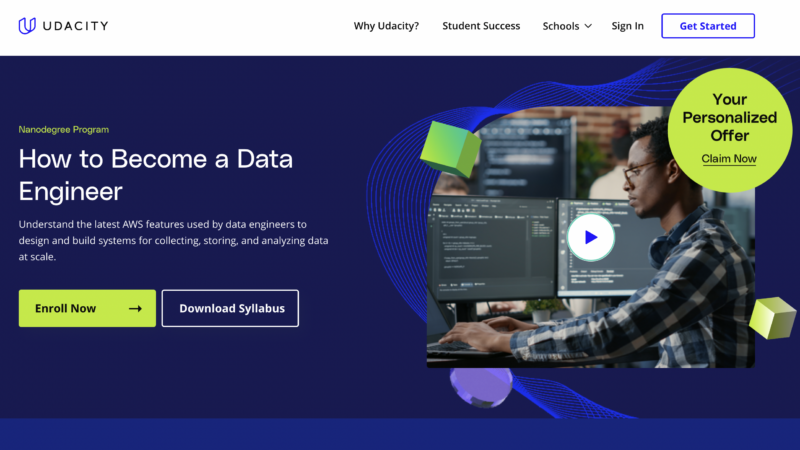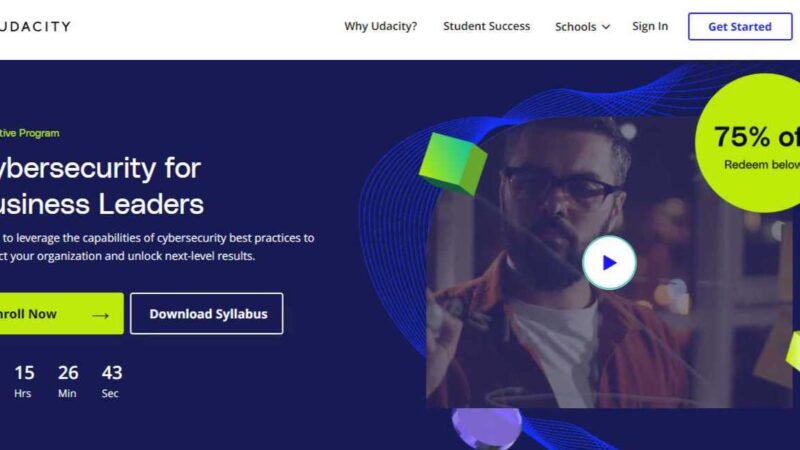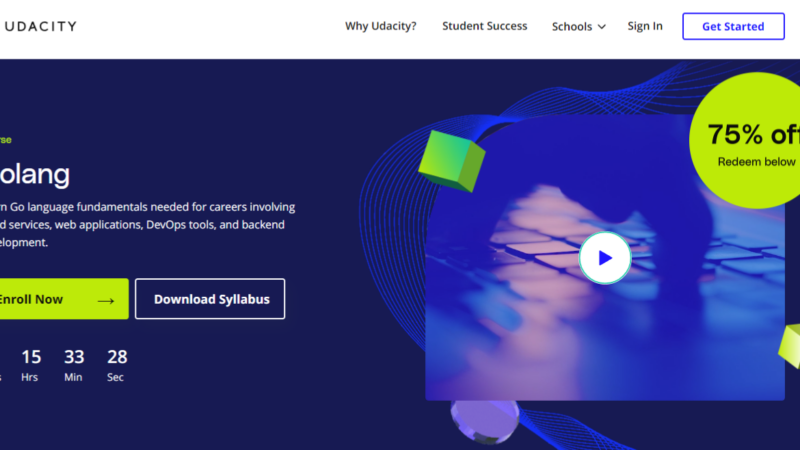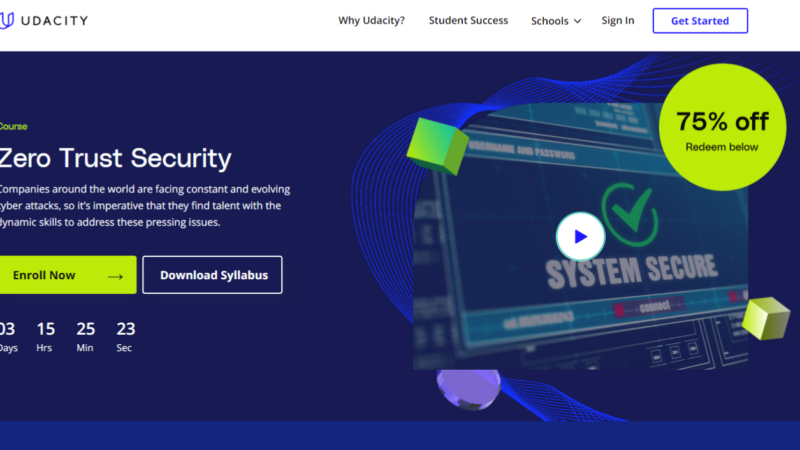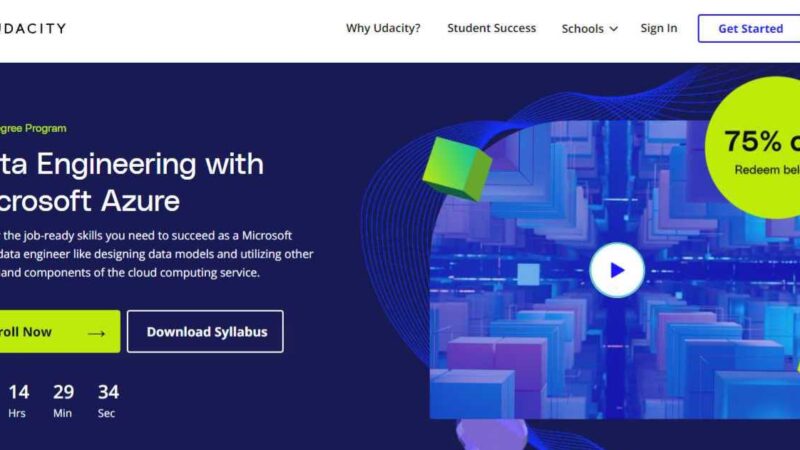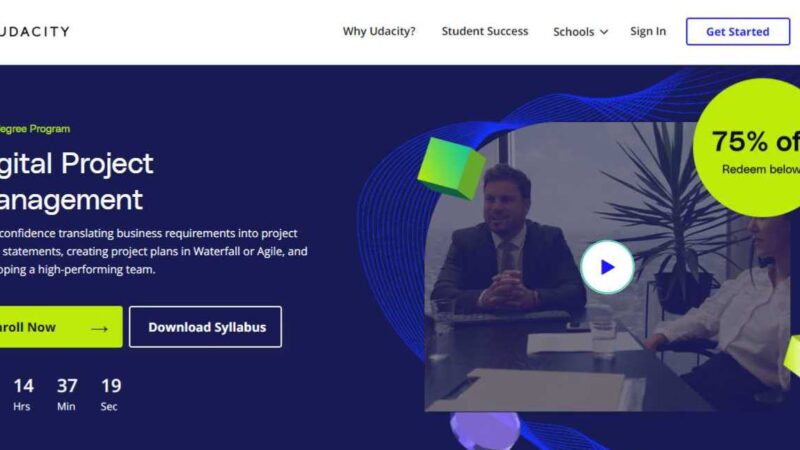Udacity Learn SQL Nanodegree Review

These days, it’s all about the data. Companies industry-wide are on the hunt for experts in the field that can turn their collected data into useful information that they can use to do business more efficiently. When companies collect data, they can turn and use it in order to learn more about their clients, making more effective marketing strategies and increasing their outreach. As you can probably guess, those with the skills to turn data into readable and useful information for companies to use are in high demand, making it a hot career to get involved with. Many of the data reading technologies and code used in the analysis is written with SQL, something that those looking to enter the field will need to be well versed in.
Of course, like many other technical skills that are in demand, some kind of certificate or degree is needed before starting the job hunt. One online academy that has been a spotlight for technical online courses is Udacity, and they just happen to have a Learn SQL Nanodegree which we are here to review today. Before sharing our experience, we’ll take an in-depth look at the course including a bit about the instructors and specific topics you’ll learn.
About Udacity
Before we get to that, we’ll first start with a bit about Udacity. Udacity is an online academy that has been around for more than a decade. What started from very humble beginnings is now a top-rated academy focused on providing learners with technical topics through video lectures and courses. As the academy gained recognition, they caught the attention of many top companies in the industry, some of which they’ve collaborated within the creation of their courses. Overall, it’s got a high rating from those who have learned with the academy and continues to create and update content to keep up with the continuously evolving world of IT.
What’s a Nanodegree?
Apart from video lectures over specific topics, Udacity also offers nanodegree programs like the Learn SQL Nanodegree. A nanodegree is a course that focuses on one topic, leading learners along the way with hands-on industry projects. They are meant to take no longer than a few months, plus, equip learners with both skills and experience that they can use their first day on the job. Included in every nanodegree from Udacity is:
- A mentor
- Career prep and mock interviews
- Self-paced online learning
- Real-world projects
- Career database with recruits
Meet your Instructors
Malavica Sridhar
Mal is a Product Manager for Waymo and former Senior Product Manager at CircleUp. She uses her industry experience in her lessons, pointing out the ways that certain skills apply to everyday tasks. She has a very passionate approach to her teaching and career, continuously pointing out the ways that companies can use data to increase productivity.
Ziad Saab
Ziad is a software developer that has worked in the industry in top companies and as an independent contractor. His views take a business-side approach as he leads you through the possibilities that come along with the skills of SQL. Apart from his industry experience, Ziad also founded a development boot camp, one where he taught full-stack development to online learners. His time teaching is reflected in his classes, letting his unique teaching style shine through.
Derek Steer
Derek has worked as a data analyst for many years with big names like Microsoft and Facebook. He used his skills and experience to create Mode Analytics, a company dedicated to helping companies make use of their collected data. Derek will introduce you to SQL, showing you the power of programming and language and how it works in the creation of data analysis and readability.
What are the Prerequisites?
Yes, SQL is a programming language but, don’t let that intimidate you. The course is designed for anyone that has a basic set of computer skills and comes with only a few recommendations before you begin. Udacity set out a list of prior knowledge which includes:
- Introductory level knowledge of both Windows and iOS operating systems
- Experience with word processing programs like Microsoft Word and PDF
- Base knowledge of PowerPoint and Keynote
- Experience with spreadsheets like Excel and Google Spreadsheets
In addition, they recommend that learners understand data types, including strings and integers. We stand by this recommendation but, we were a bit behind when we started learning SQL. We did have to study a bit more and regretted not taking some sort of introductory course before signing up for this course. This is just our spill but, if you’re ready to jump in head first, do it!
Course Breakdown
Now, let’s get to the course. There are two sections in the course, each one broken down further into modules that give you good starting points in case you need a break. The course is designed to build up your skills, allowing you to apply them after you learn them to see how they work in real situations. The two sections of the course are:
Intro to SQL
The course wastes no time introducing you to the language. You’ll learn the fundamental commands and see how they are used to manipulate data tables and structures. One of the most useful skills from this section is the ability to clean and optimize data using SQL. This helps to create an analysis that is effective and more enhanced that will produce the results you, and companies, are looking for.
Project One
The end of this course comes with a project that is both interactive and allows you to set your skills free. You’ll work with data sets to analyze data and make informed decisions based on your findings. The project deals with deforestation, taking a look at which countries have forests that have been shrinking in size. From start to finish, you’ll see how those in the field do it, plus, share your report to make an informed decision based on collected data.
Relational and Non-Relational Databases
This part of the course is all about how to structure databases. This is an important part of data analysis, helping to amplify results and make structuring models more simple. You’re given the chance to see how to choose between databases, choosing the one that will give the best and most effective results for the analysis you’re looking to create. You’ll use a variety of tools like SQL’s Database Definition Language (DDL), Database Manipulation Language (DML), and MongoDB to get a good grasp on the different behaviors exhibited by data.
Project Two
The second project is a lot of fun. You’ll build your own social news aggregator, starting with the construction of data structures. You’ll first have to analyze data and tweak it for better analysis. Then, you’ll create a new database, one that you can use to help in writing SQL queries. In the end, you’ll have worked out a real industry problem, one that those with skills in SQL and data analysis work with day after day.
How Long Does the Course Take?
The course might sound like a lot to get through but, the video lectures are organized to build off of one another, making it easy to get through one module after another. Udacity estimates that the course will take two months to complete when dedicating at least 10 hours per week. This is a fair estimate but, it didn’t take us so long. Because the modules are set to flow one after another, the thing that took us the longest was the project.
We had to backtrack a bit to successfully complete each one of the projects. Even though we took our time and were able to study up on skills before starting on projects, it took us a little less than one month to complete, spending about 20 hours a week. We were motivated for a few reasons, one of them being the cost.
Motivated by cost, we were made it our goal to complete the course faster. This is because Udacity offers two ways to pay, one that allows you to take your sweet time and the other that goes by Udacity’s estimate. While it sounds nice to take as much time as you’d like, you’ll end up paying for it in the end. Pricing goes per month of access, adding $359 each month that the course is not complete. The other option that takes Udacity’s estimate into account is to pay all at once and enjoy a 15% discount. Taking this route, you’ll pay $618 when all is said and done.
Either option has its ups and downs. We tried to save a few bucks, by beating Udacity’s time frame and finishing the course in less than one month. In this way, we were able to complete the course faster and save a few bucks, a recommendation that we pass to all of you.
What Have Learner’s Said?
Before we get to our thoughts, let’s take a look at what other learners had to say about the course. Overall, the course has a rating of 4.3 out of 5 stars, receiving praise for the curriculum and the projects in each module.
“Overall this program was excellent. I came away with a much better grasp of the subject matter and tangible skills and experience than I was expecting going in. It is a lot of work. Far more than the estimated 10 hours per week, but this was actually a good thing. I had a fair amount of SQL instruction before starting, but after acquiring the skills taught in the program, I realize that I didn’t know SQL nearly as well as I thought. The program gives you a lot to do, but I feel there was very little wasted time. It all helped me acquire and improve useful SQL and database skills.” – Shawn R.
“The course was very comprehensive and useful. They teach you everything step by step and I loved it. I liked the project because it was like a real world project and also it was challenging. Thank you.” – Ruddy S.
“I appreciate that mentor help me to find my bug and improve my coding. Also, this project give me a format to how to write a formal project.” – Fiona Q.
What’s the Job Market Like?
Let’s start with a look at the average salary of a data analyst with SQL skills. The current average salary in the United States is $63,754 which does not include bonuses or commission offered by some companies. That is not the only attractive part of the job market today, with the demand increasing year after year. SQL is an older language and may not be as hip as Python or R but, it is one of the most effective at analyzing and manipulating data. Those with SQL skills and knowledge of how to use tools to enhance it will most likely have a job ready and waiting for them, able to break into the industry not too long after certification.
Final Thoughts
Our experience with the Learn SQL Nanodegree from Udacity was a positive one, one that we were happy we completed. The curriculum was great and the projects helped us feel prepared to start a job from day one. On top of that, we took advantage of a mock interview with a mentor in career services, feeling confident and more prepared to rock our first interview. The fact that so many leading industries know and back Udacity gives us a bit of an edge in the job market, as recruiters know that we’ve learned in-depth SQL skills and have hands-on experience we can use from day one.
If you’re thinking about a career in IT, Udacity is a great resource to gather the skills you need. Data analysts are in high demand and are only expected to become more valuable as more companies make their transition into a more digitized way of doing business. So, go for it! You’ll be glad you did.
Get Flat 65% with our exclusive link, Claim Now
